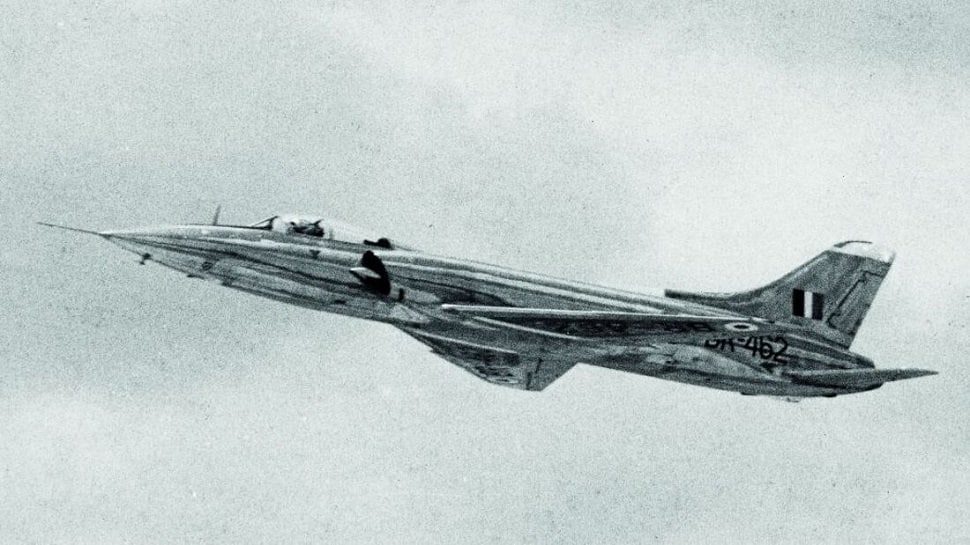SOURCE: AFI


In the annals of Indian aviation history, few stories are as poignant—or as frustrating—as the saga of the HF-24 Marut, India’s first indigenously designed jet fighter, and its eventual sidelining in favor of the British-built SEPECAT Jaguar strike aircraft. Recent revelations have shed new light on this episode, highlighting the irony that many Indian Air Force (IAF) pilots who transitioned from the HF-24 to the Jaguar found the latter inferior in certain critical roles, particularly as a low-level strike aircraft.
This decision not only marked the end of the HF-24 program but also led to the resignation of its brilliant designer, Dr. Raj Mahindra, whose departure signaled the demise of purely Indian-designed combat aircraft until the Light Combat Aircraft (LCA) Tejas program decades later. The episode remains a stark reminder of the institutional shortsightedness that has, at times, hampered India’s quest for self-reliance in defence aviation.
The HF-24 Marut holds a unique place in Indian aviation as the first jet fighter designed and developed in Asia outside the Soviet bloc. Conceived in the late 1950s by Hindustan Aeronautics Limited (HAL) under the leadership of Dr. Kurt Tank—a renowned German designer—and later spearheaded by the talented Dr. Raj Mahindra, the Marut was intended to be a supersonic multi-role fighter capable of ground attack and air superiority missions. The aircraft first flew in 1961 and entered service with the IAF in 1964, with around 147 units eventually built.
Despite its ambitious goals, the Marut faced significant challenges, primarily due to underpowered engines. The aircraft was designed to use the Bristol Siddeley Orpheus 703 turbojet engines, but plans for more powerful afterburning variants fell through due to geopolitical and commercial constraints. As a result, the Marut never achieved its intended supersonic performance, topping out at around Mach 0.95. Nevertheless, it proved to be a rugged and reliable platform for low-level strike missions, with excellent handling characteristics and a robust airframe that performed admirably in the 1971 Indo-Pak War, particularly in the Rajasthan sector.
Recognizing the Marut’s potential despite its engine limitations, HAL and Dr. Raj Mahindra proposed advanced variants—the HF-71 and HF-72—in the 1970s. These upgraded designs aimed to address the Marut’s shortcomings by incorporating more powerful engines, improved avionics, and enhanced weapon systems. The HF-71 was envisioned as a dedicated ground attack variant, while the HF-72 aimed to achieve supersonic performance with a redesigned airframe and afterburning engines. These variants held the promise of transforming the Marut into a truly versatile combat platform, capable of meeting the IAF’s evolving needs in a volatile region.
However, the IAF’s decision in the late 1970s to procure the SEPECAT Jaguar—a joint Anglo-French deep penetration strike aircraft—effectively sounded the death knell for the HF-24 program and its proposed successors. The Jaguar, selected for its advanced avionics, terrain-following radar, and ability to deliver precision strikes, was seen as a modern replacement for older aircraft in the IAF’s inventory, including the Marut. The IAF’s choice was formalized with plans to phase out the HF-24, and the HF-71/72 projects were shelved indefinitely.
While the Jaguar brought undeniable technological advancements to the IAF, including its navigation and attack systems, recent accounts from pilots who flew both aircraft have painted a more nuanced picture. Many IAF pilots who transitioned from the HF-24 to the Jaguar reportedly found the latter lacking in certain areas, particularly in its role as a low-level strike aircraft. The Marut, despite its underpowered engines, was praised for its exceptional stability and handling at low altitudes, attributes that made it well-suited for the rough terrain and high-threat environments of the Indo-Pak border.
The Jaguar, while equipped with sophisticated avionics for its time, was criticized by some pilots for its less forgiving low-level performance and higher maintenance demands. The Marut’s simpler design and rugged construction allowed it to operate effectively in austere conditions, a quality that endeared it to pilots tasked with close air support and battlefield interdiction missions. In hindsight, the HF-24’s airframe and aerodynamics were seen as a solid foundation that could have been built upon with modern engines and avionics, potentially creating a more cost-effective and tailored solution for India’s needs than the imported Jaguar.
The HF-24 saga is often cited as a classic example of institutional shortsightedness within the IAF and India’s broader defence establishment. While the Jaguar undoubtedly brought advanced capabilities to the IAF, the decision to abandon the Marut program without fully exploring its potential reflects a preference for quick fixes over long-term investment in domestic R&D. This pattern of prioritizing foreign imports over indigenous development has been a recurring theme in India’s defence procurement history, delaying the growth of a self-reliant defence industrial base.
NOTE: AFI is a proud outsourced content creator partner of IDRW.ORG. All content created by AFI is the sole property of AFI and is protected by copyright. AFI takes copyright infringement seriously and will pursue all legal options available to protect its content.